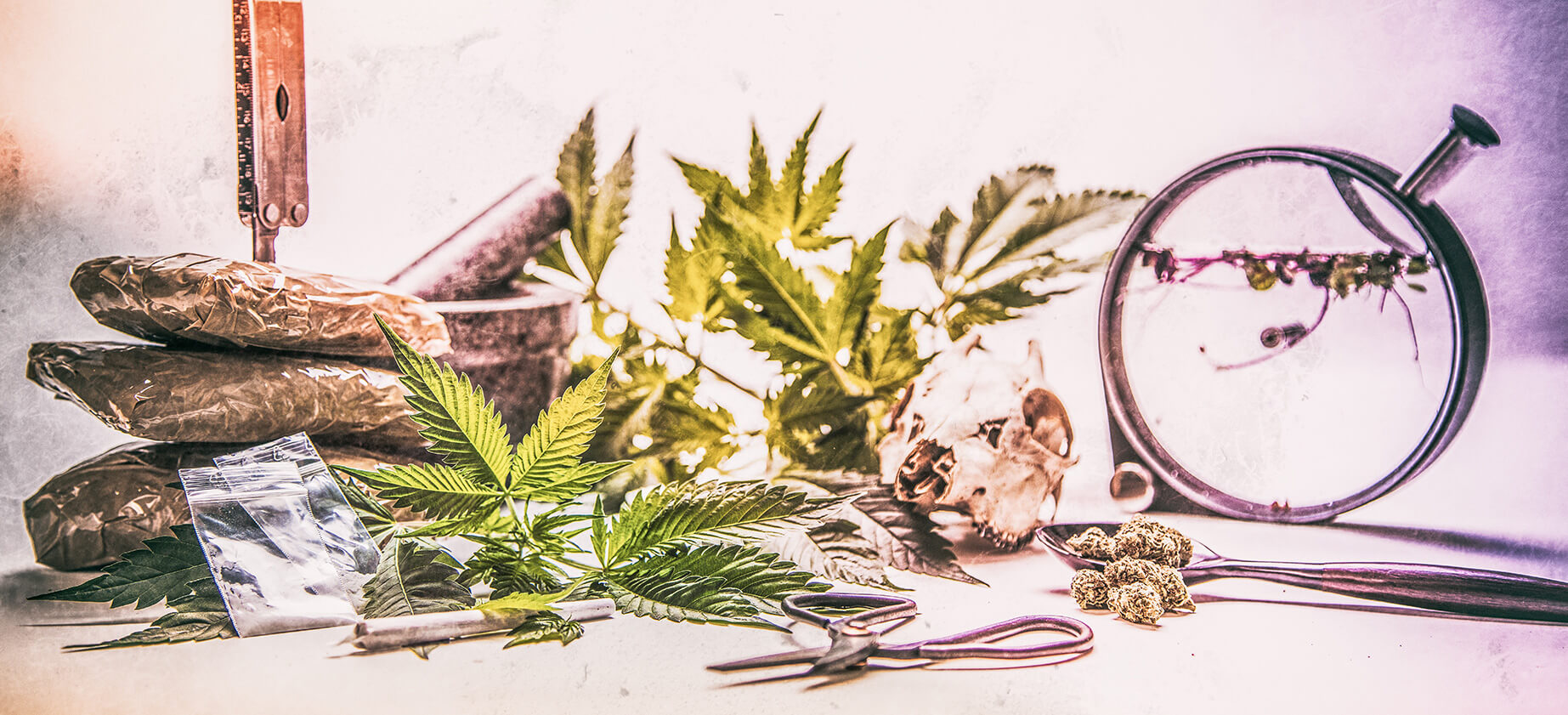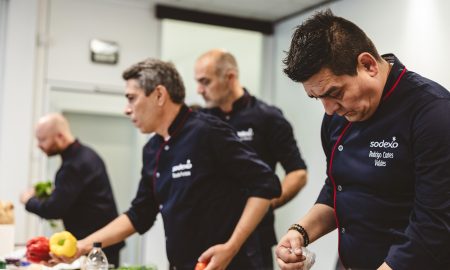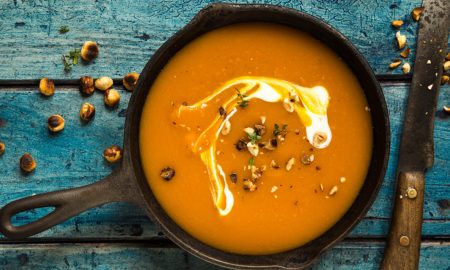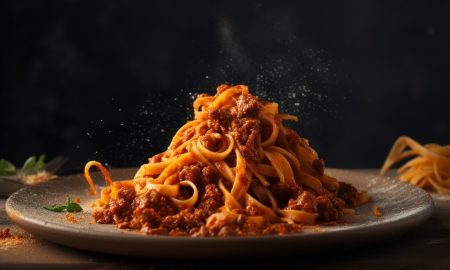They’re often perceived as playful, unimportant additions, but it’s almost impossible to overstate just how important herbs are to a chef. Whether you showcase herbs in your dishes or avoid them under the pretext of radical puritanism, they are – and will remain – deeply rooted in culinary tradition. “Why are doctors demi-gods in white?” asks Thorsten Probost, three-toque chef at Griggeler Stuba, Burg Vital Resort, Oberlech. “Because cooks have been around longer!” he crows. Probost’s joke plays on herbs’ original medicinal usage as well as the white uniform the two professions share – which isn’t just a coincidence. At any rate, the food industry has a continuing fascination with the world’s grasses, blossoms, shrubs, and roots – whether they’re exotic, dangerous, banned, or all of the above. But which of these rare and exotic foodstuffs stand out the most? How legal or illegal are the plant world’s hottest up-and-coming commodities? And, more importantly, how can we use them today?
Force of habit
One shining example of this longing for the unknown is Koppert Cress, a company based in the Dutch town of Monster. Marcel Thiele, its culinary development manager, treks to the most remote corners of the planet in search of new and exotic spices, so he knows all about the process of importing them to Europe. Legally, of course. The red tape involved in that process isn’t exactly decreasing, as the food industry knows probably better than anyone. “Under the current regulations, for example, nutmeg would definitely no longer be permitted,” Thiele says. “Simply because nutmeg checks all of the danger boxes.” In case you didn’t know, three nutmeg seeds are enough to kill an adult human instantly. And those three full-sized nutmeg seeds are freely available for purchase at any grocery store. Another factor that would make nutmeg an absolute no-go nowadays is drying, which Thiele says can’t be guaranteed in its countries of origin. “So if the nutmeg is from Grenada or Indonesia, for example, you never know whether it’s contaminated or not.” Specifically, he says, “If you break a nutmeg seed open or cut it in half, you’ll see a pattern inside, which means hollow spaces. Not like almonds, which are perfectly smooth. The nutmeg flesh can cause so-called aflatoxins to form, which in turn react to myristicin, the active ingredient in nutmeg, creating a highly toxic by-product.”
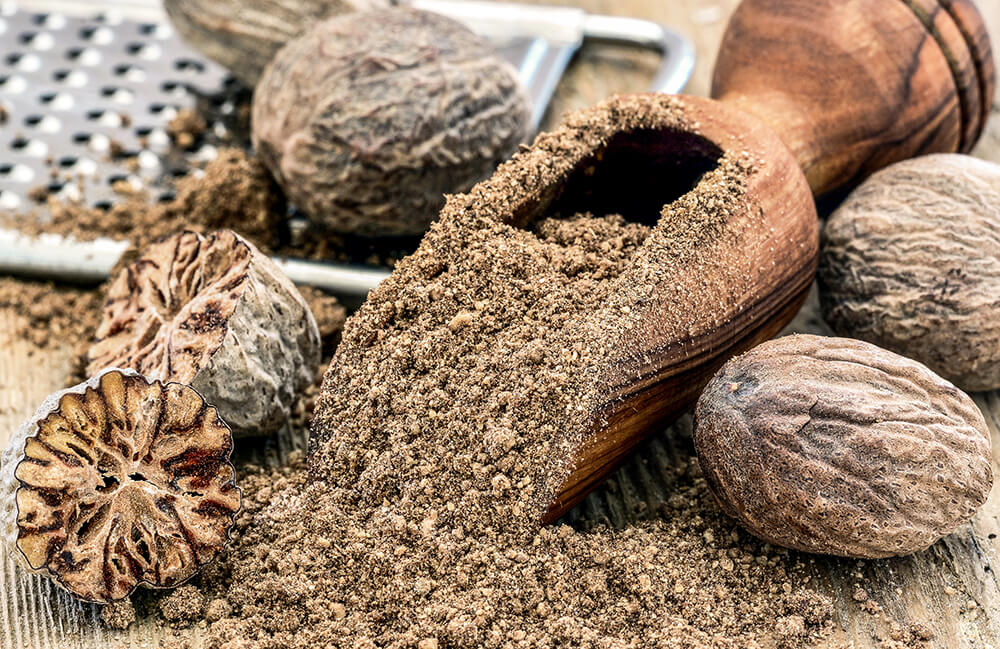
Image: Roger Heil – stock.adobe.com
Meticulous precision work
Unknowingly grating one of these contaminated nutmegs over or into a dish would deliver that characteristic peppery-sweet flavor with a fatal overdose of poison on the side. Which makes it that much more important, Thiele explains, for chefs to consult experts regularly when it comes to procuring and using potentially dangerous products. But if nutmeg is so dangerous, why is it so readily available? “Really only because it’s been well-known and popular for centuries,” Thiele says. “Nutmeg isn’t JUST poisonous, obviously. People also love its flavor, and rightly so.”
That’s one of the central issues when it comes to approving foods for import, particularly herbs and spices. Before you can officially allow a product into Europe, you first have to check whether it’s listed in the European Novel Food Catalogue. “That’s where all products and parts of plants are checked meticulously based on rules that have been in force since the beginning of the 20th century. If you want to bring a product into Europe, and it’s not listed in that database, there’s a process you can go through.” Sounds like never-ending, miserable bureaucracy, but it doesn’t necessarily have to be, according to this culinary treasure-hunter. “It sometimes goes relatively quickly,” he assures us. “Especially if you have literature – cookbooks, for example – that prove that the product has been used before in Europe, and has been consumed with no problems. That requires some insanely meticulous research, though. You have to really dig deep into traditions, translations, and so on.”
But what if you want to import a rare, exotic plant into Europe that’s never been sold or consumed in Europe before, and isn’t mentioned in a single cookbook? “For one thing, you should know that a lot of plants in the world have European varieties,” Thiele points out. So if you find a tasty little plant in some remote corner of the world, and you know it’s got the chops to take the European culinary world by storm, the first step you take is a surprisingly ordinary one: “First,” Thiele says, “you have to check whether there’s a plant of the same genus, species or family in Europe.” If so, a toxicologist will have to look into it. As Thiele explains, “Just because a plant is edible in South Africa, for example, that doesn’t mean it will be in Europe, or vice versa.” Once an herb arrives in Europe, it adapts to its surroundings and climate, and interacts with nearby flora – which can cause toxins to form. Of course, when we’re talking about toxins and plants, there’s one particular type of greenery that immediately springs to mind.
A new take on “plant-based” eating
“Why do I cook with cannabis? Because I believe that a lot of chefs don’t understand herbal medicine.” In the liberal state of California (in the somewhat less liberal country of the United States), cannabis chef Chris Sayegh makes THC and CBD subtle protagonists in his creations. Sayegh’s definitely not the only guy in the Golden State making a living through weed, but there aren’t many like him on the fine dining scene, and he’s definitely the best-known of the bunch. Sayegh created his first cannabis-based menu in 2012, back when it was still illegal (marijuana has only been legal in California since 2016). Interestingly, thanks to legalization, marijuana has become a major economic factor throughout the US. In California alone, the value of the legal cannabis market is estimated at seven billion dollars, which translates to around a billion in tax revenue. “With The Herbal Chef,” Sayegh explains, “we wanted to bring herbal medicine into modern cuisine. Cannabis gives us a way to make that happen. Our philosophy is that, first and foremost, we want to create a great culinary experience. The food has to be spectacular on its own. To put it completely immodestly, our goal is to bring more health and well-being into the world,” the ganja guru says confidently (and completely immodestly).
Sit back and enjoy
Sayegh primarily uses oils to do his cannabis culinary infusions. “We start with the flowers, which we send to a partner lab. They do a distillation process, and the end result is a concentrated oil. That’s what I use in my food.” But Sayegh’s creations are a far cry from your run-of-the-mill college-dorm pot brownies. “Weed” isn’t the prevalent flavor in any of the ten courses on his menu, nor are his plates decorated with seared cannabis flowers or anything like that. “The idea is actually that you don’t taste the THC at all. Period. Cannabis is an extremely strong, at times even overpowering aroma. Really herbaceous, earthy, bitter… So we don’t want to drown everything in that flavor.” Sayegh does change his menu often – partly because he prefers to do seasonal dishes, partly because he often does pop-ups in various cities – but evergreens like brioche with cannabis-oil-injected crème fraîche or escargot sautéed in a lightly infused oil make it clear that he takes a gentle touch with the infamous herb. With all the variety he puts into his ten-course meals, one thing remains constant: by the end, each customer has consumed ten milligrams of THC and ten milligrams of CBD.
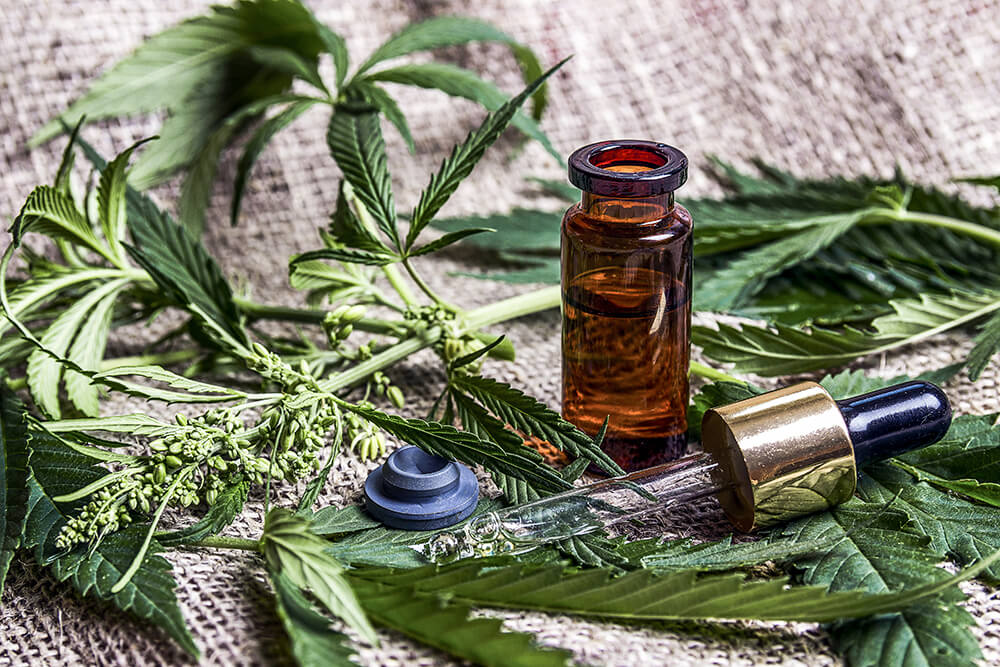
Image: WindyNight – stock.adobe.com
THC, short for tetrahydrocannabinol, is one of many cannabinoids, substances that are present in cannabis plants in different concentrations. Unlike CBD (cannabidol), THC docks with CB1 receptors located on the surface of human nerve cells, which causes an intoxicating effect by triggering the release of dopamine in the brain. CBD, the other main substance in cannabis, is attracted to CB2 receptors, which is why it doesn’t get you high – it has more of a relaxing, pain-relieving effect. “Dosage-wise, the menu is very clearly structured,” Sayegh says. “In the first three courses, you get a total of five milligrams of THC. Dishes number nine and ten give you five milligrams of CBD apiece. That way, the effect is evenly distributed, it doesn’t hit all at once.” Of course, Sayegh adds, customers can also order their food without the “bonus” ingredient, though that rarely happens – most people come to The Herbal Chef for that very reason. “Eating cannabis allows you to get the full effect of all the nutrients, in the most literal sense of the word,” Sayegh says. “Much more so than if you smoke it.” The ganja gourmet is convinced that, as the stigma on cannabis decreases (thanks in part to his help), other substances will find their way into the kitchen in the future as well. “LSD is certainly a candidate,” he says. “But mostly it’s about seeing plants as teachers, helping us learn a lot about our bodies and minds.”
Alpine exotics
The rise of globalization has meant that virtuosic herbal flavors are increasingly associated with unfamiliar and alluring regions… but even our own neighborhood flora can make for some outstanding culinary protagonists, as three-toque chef Thorsten Probost (Griggeler Stuba, Burg Vital Resort, Oberlech) has begun proving in groundbreaking ways. “Devoting so much space to herbs obviously has to be something you want to do.” At the same time, just wanting to do it isn’t enough. The more prized (and, paradoxically, the more local) the herbs, the more difficult it is for a gourmet kitchen to procure them in sufficient quantities. “Sometimes it’s really not that easy,” says the herb king of Oberlech before launching into an explanation of his own program. “We don’t use spices, we use herbs, because they transform the original flavor of the products. Our salt comes from Upper Austria, and we don’t use pepper at all – my pepper is the Atamantha cretensis,” Probost says. Probost uses the seeds of this delicate Alpine plant, which looks very similar to caraway, to provide a gentle, smoky sharpness similar to the one pepper normally lends. He’s also enthusiastic about water avens. “In spring, when they bloom here in the Alps, you dig up the roots, clean them and allow them to dry. Then you can grind them up – and in winter, you add them to red cabbage. Totally amazing!” Still, even Probost strays a little further from home at times. “Asia, in particular, has a number of herbs that support health. Angel grass, for example, has a demonstrable benefit in terms of reducing the side effects of chemotherapy.” The plant is dried and pulverized, and the powder is usually administered in capsule form. It’s probably not a surprise that angel grass has found its way into Probost’s cooking. “I remove the slightly meaty leaves, slice them into very thin, fine strips, and add them to salads. They add a mild sour-bitter flavor.” Thorsten Probost’s detailed knowledge and skillful use of angel grass are one good example for why chefs and doctors wear such similar uniforms. True to Hippocratic form, Marcel Thiele sums it up like this: “If I need something in order to live, I go to a chef. If I need something in order to survive, I go to the doctor.”


